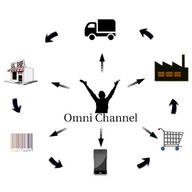Crowdsourcing: Weapon of Mass Disruption

การพัฒนาธุรกิจ
492 week ago — ใช้เวลาอ่าน 6 นาที
Almost a decade ago, moviemaker Vishal Bhardwaj did something curious. He flashed three options for the name of his upcoming release across TV channels in the country and asked people to vote for one they liked best. Omkara, the people’s choice became a smashing hit.
When Micromax wanted a new logo, it ran a worldwide contest targeting the design community on the internet. In two months, it received 2,500 entries from more than 1,500 participants. The winning design came from Eric Atkins based in the US. Frustrated with increasing traffic violations, the Delhi Police encouraged the general public to post photos/videos of offending vehicles. Thanks to the overwhelming response, they can now penalize offenders with proof. Indeed, these are examples of adopting an out-of-the-box approach to problem-solving. More so, they are illustrations of a phenomenon that is catching on fast across the globe – crowdsourcing.
-
People power
Crowdsourcingweek.com defines crowdsourcing as the practice of engaging a ‘crowd’ or group for a common goal. Essentially, crowdsourcing involves using technology to marshal a large group of people to accomplish something — often innovation, problem solving, or efficiency. The earliest example of crowdsourcing is Wikipedia, which is written and edited by tens of thousands of volunteer contributors. Or think back to the nation-wide campaign orchestrated by Shri Narendra Modi across social media last year. Millions of Indians contributed their ideas on the content for his speeches, suggestions on governance and even the mandate. It was people who advised Shri Modi to stop ‘Congress Bashing’ and shift the focus of his speeches to development. We continue to see increasing adoption of crowdsourcing practices in politics and in entertainment. (Anyone who has ever voted for a Sa re Ga Ma Pa, Indian Idol, or Bigg Boss candidate, has participated in crowdsourcing.)
Like other consumer-facing industries, retail too is readily embracing crowdsourcing. In countries like the US, brands as well as retailers are seeking not just ideas, time and expertise but also funds from the masses for a project. - The scope
Crowdsourcing is changing the way governments and businesses work, hire, research, make and market. What can be crowdsourced? The short answer is, everything. In business, the areas that have benefitted significantly from crowdsourcing are: Enterprise, education, IT, finance and marketing.
Businesses are increasingly using the power of the people to: Accelerate innovation, seek ideas, reinvent business, financial and work models, co-create, engage consumers save cost and increase efficiency. Depending on what is being outsourced, crowdsourcing can be categorized as crowdfunding, crowdshipping, crowdthinking. Crowdfunding is when the crowd contributes monies; crowdthinking is when it contributes ideas or expertise, and crowdshipping is when they participate in your logistics.
- Why crowdsource
“When a brand crowdsources, it tells its consumers that I (the brand) am listening to you. I’m delighted that you are contributing to my idea. I appreciate the fact that you are taking ownership of the brand that you like. It also says that I’m willing to gratify you for your idea,” said TalentHouse India CEO Arun Mehra in a media interview. TalentHouse offers a crowdsourcing platform. It offers a collaborative platform unlike any other.
Leveraging collaborative practices and tools leads to disruptive business implications and transformative innovations. It helps build a partnership with one’s target audience. “The customer of the future wants to participate; they don’t want to be passive. This has been enabled by social media and the use of reviews. Smart retailers have already got the message,” reasoned Maureen C. Atkinson, Senior Partner at global retail consultants J.C. Williams Group.
A well-thought out crowdsourcing strategy can help international retailers connect with local customers. According to Dinesh Goel, founder of Innovative Ideators, global brands wanting to operate in India will have to include the local connect through crowdsourcing. -
Here to stay
According to global business gurus, crowdsourcing as a work model, financial model, and business model is not a passing trend but an evolving way of working. They warn that existing enterprises not willing to adapt and embrace this new opportunity, will be disrupted. For retail CEOs, knowledge and under- standing of collaborative business practices will be a required skill. So also for other C-level suite executives and entrepreneurs.
“The concept of crowdsourcing has been in existence for over a decade, but 2014 is the year that solidified it not just as a trend, but as an approach that is here to stay. Research we have conducted at eYeka looking into the use of crowdsourcing by consumer goods companies shows that PepsiCo alone has increased its use of crowdsourcing by more than 325% this year, with many other brands following suit,” wrote François Pétavy, CEO of eYeka, a crowdsourcing marketing company in an article on the topic.
Clearly, businesses are seeing a lot of value and benefits in crowdsourcing and are taking it very seriously. And why not? There’s a way for the world to be smarter than a handful of people.
Article Source: STOrai Magazine
ดูโปรไฟล์ของ STOrai
Most read this week
Trending













Comments
Please login หรือ สมัครสมาชิก to join the discussion